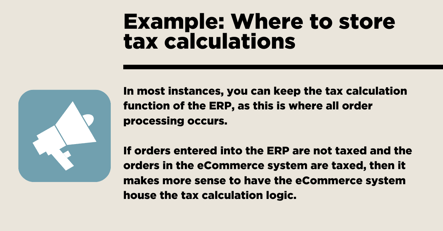
1. Determine the source of data flow -- create a data map to plan which system owns the data, or where it should be shared.
2. Plot out your business logic -- prepare an integration framework that plans out purchase processes and functionality in order to eliminate redundancies.
3. Consider integration methodology -- keep it simple and select a strategy that supports your business requirements and allows for consistency.
4. Partner with an expert -- save time, money and make future upgrades and integrations far more manageable.
Connecting an eCommerce system, like Magento 2, to a large and stable ERP, such as JD Edwards, will allow for a seamless movement of data. However, the integration effort can be one of the most difficult parts of any integration initiative. It has been my experience that these projects require a robust and well-planned strategy that covers data flow, business logic and a solid integration methodology.
The first item that should be addressed in an eCommerce integration project is to define your data, determine where each data element should be stored, and which system “owns” the data. You should consider specific items such as Customer Master data, Item/Catalog data and Customer Order Information. After you can decide on where each item should reside, or if it should be shared, create a data map so that ownership is clearly defined. A great mantra to keep in mind is: “There can only be one source of the truth,” which will help you to establish whether the eCommerce or ERP system should own the data.
After it’s determined whether the eCommerce or ERP system owns which pieces of data, consider the business logic required to process an eCommerce order. eCommerce systems typically include functionality that is duplicated in the ERP, such as item pricing, taxing, and order processing. In considering these redundancies, you should look to keep a business function within the system that is best suited for processing that function.

Finally, you should look at integration methodologies. There are a host of B2B eCommerce integration solutions from which to choose. It’s often more beneficial to use an integration methodology that has been used on a variety of projects and has proven successful. This allows for consistency across all projects. I also believe that this allows the development team to better understand and support new integration points. One of the most common misconceptions with operating systems like IBM i is that it’s impossible to interface with it. People often think that the data is simply locked in there and they can’t integrate with IBM i, much less JD Edwards World. However, we have integrated many eCommerce sites to IBM i, both alone and with JDE World, and there are a number of ways to access that information.

Also, consider how close the data needs to be to real-time, as the closer it is to real-time, the more labor-intensive and costly the integration project becomes. I also like to keep things as simple, straightforward, streamlined and automated as possible. Over-complicating the integration simply makes everything that much harder -- from programming it in the beginning to supporting it after go-live. If you’re keeping everything as simple as possible, it’s usually a good indication that you’ve chosen the best integration method. And keep in mind that the integration and software system should be prepared to support any feature you’ll require as your business grows.
Executing a successful B2B eCommerce site is a big investment. Look for partners with a verifiable, high level of expertise in the ERP e-commerce integration system you choose to support your business needs. Integrating a B2B eCommerce site to an ERP, such as JD Edwards World, has many moving parts. That's why Your e-commerce ERP solution should include training and technical support. In executing any integration, remember that planning, organizing, and documenting a strategy allows for a much smoother project. So measure twice, cut once, and keep things simple. The smart move is to set it up right the first time. Learn how other B2B companies successfully integrated their ERP with their eCommerce System.
5 Questions to ask before starting an eCommerce Project: Before meeting with your eCommerce partner for the first time, it is important to ask yourself and your team five critical questions to ensure the best possible
outcome.
What is Middleware and why should you care?: Utilizing middleware allows you to upgrade on either the ERP or eCommerce side without significantly altering the integration.
Preparing for an ERP - B2B Integration: Following these rules is a great start to your eCommerce and ERP integration, and these tips will help make the process as smooth and successful as possible.
Technical Challenges: Addressing some common integration challenges, including catalog data, pricing, customer data and catalog navigation.
Editor's Note: This blog was originally posted in April 2012 and has been updated with new information.
Lorem ipsum dolor sit amet, consectetur adipiscing elit
For the past two decades, we've made it our business to help you work smarter. From commerce challenges to ERP customizations, we support the power of your big ideas by helping you work more strategically, more intuitively, and more efficiently.
2658 Scranton Road, Suite 3
Cleveland, Ohio 44113
216.369.3600
No Comments Yet
Let us know what you think